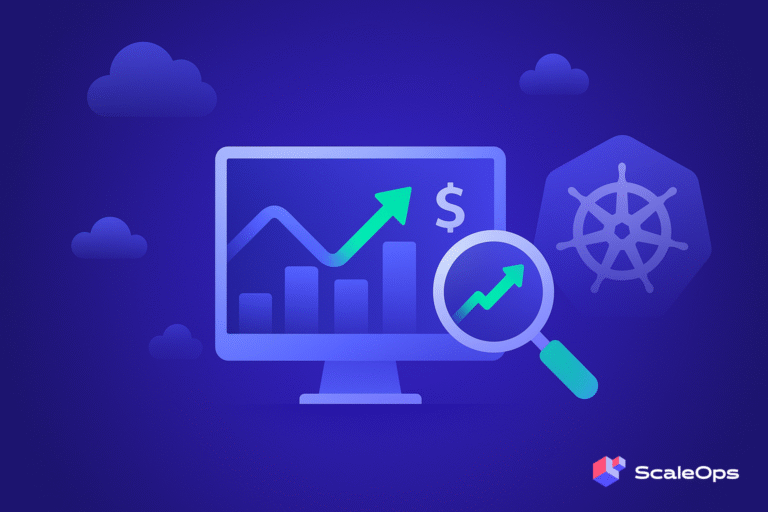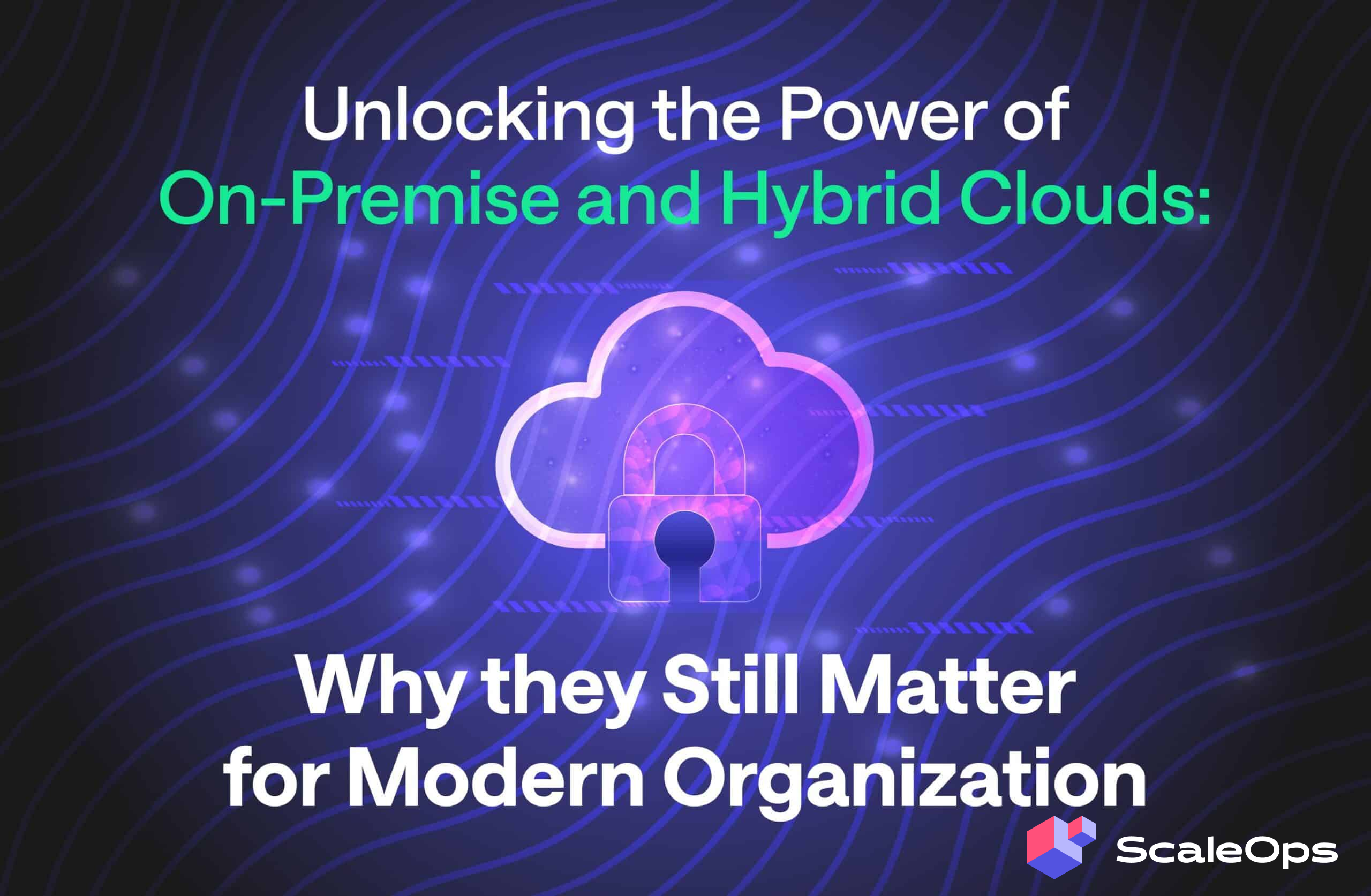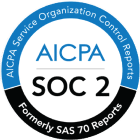In today’s digital landscape, fully cloud-based infrastructures such as AWS, GCP, or Azure are the norm. However, many organizations still prefer to operate in on-premise or hybrid cloud environments due to several critical advantages. These environments provide enhanced control, customization, and adaptability, which can be pivotal for businesses in highly regulated industries or those requiring specialized configurations.
In this blog post, we will explore why some organizations continue to prioritize on-premise and hybrid cloud environments and how the ScaleOps platform can enhance these deployments.
Compliance with Strict Regulatory Requirements
Compliance with strict regulatory requirements is non-negotiable for organizations in industries such as healthcare, financial services, and government. These industries are governed by frameworks such as HIPAA, PCI DSS, and GDPR, which demand precise control over data, systems, and auditing.
In such highly regulated environments, businesses may be required to maintain specific security controls that public cloud providers might not easily support. On-premise and hybrid setups give organizations full control over compliance measures, ensuring they can meet and exceed regulatory standards without relying on external providers.
Supporting Data Sovereignty
Data sovereignty is a growing concern for organizations that operate in countries with strict regulations around data storage and handling. In certain industries like healthcare and finance, data must reside within specific geographical boundaries to comply with local laws. On-premise or hybrid cloud environments allow organizations to maintain full control over where their data is stored, ensuring compliance with data sovereignty requirements.
By retaining data on local servers, businesses can avoid the complexities of cross-border data transfer regulations and reduce the risk of breaches caused by inadequate cloud provider security policies.
Performance and Latency Advantages
When applications require low-latency performance, such as those in high-frequency trading, autonomous vehicles, or real-time data analytics, relying solely on the public cloud can introduce latency issues due to the distance between the client and the cloud data center. On-premise and hybrid solutions provide proximity to the end-user or application, significantly reducing latency and improving performance.
With hybrid solutions, organizations can benefit from the scalability of the cloud while ensuring mission-critical applications run on-premise for optimal speed and reliability.
Air-Gapped Environments
Some industries, such as defense, government, and utilities, require air-gapped environments where systems are completely isolated from the internet for security reasons. Cloud services cannot meet these requirements, but on-premise or hybrid systems allow for the necessary physical separation to ensure highly sensitive data is never exposed to external networks.
In such cases, running a fully isolated environment that is secure and disconnected from any cloud infrastructure is not only necessary but mandatory. Hybrid architectures give organizations the flexibility to support isolated workloads alongside internet-connected applications.
Cost Efficiency Over Time
Cloud services offer scalability and flexibility, but long-term costs can spiral out of control, especially for organizations with stable or predictable workloads. On-premise infrastructure, while initially more expensive due to hardware and setup costs, can become more cost-efficient over time. Organizations that require consistent resources, like storage-heavy data archiving, can benefit from a well-maintained on-premise system that avoids the recurring operational expenses of cloud platforms.
By combining on-premise with a hybrid model, organizations can offload high-demand or seasonal workloads to the cloud while keeping consistent, cost-effective operations in-house.
Support for Specialized Hardware and Software
Organizations that run workloads requiring specialized hardware, such as GPUs for machine learning or legacy applications tied to specific hardware configurations, often find that cloud providers do not offer the necessary hardware support or offer it at a high price point. On-premise solutions provide the flexibility to utilize any hardware configuration the organization needs without constraints imposed by cloud providers.
For example, organizations running complex simulations, scientific research, or custom IoT setups may require unique combinations of hardware and software that are not feasible or too expensive to replicate in the cloud.
How ScaleOps Enhances On-Premise and Hybrid Cloud Environments
ScaleOps is uniquely positioned to provide value for organizations running on-premise or hybrid cloud environments, offering flexibility, ease of management, and powerful automation capabilities. Here’s how:
Simple, Self Hosted installation across any environment
With its Self Hosting model, installing and onboarding ScaleOps onto your environment, whether on-premise, hybrid, or cloud, requires only a single, uniform command. This allows organizations to discover the savings potential within minutes.
Unified Management and Automation
ScaleOps provides a single management point across on-premise, hybrid, or cloud-only environments.
The full feature set and functionality of the platform are available, regardless of environment type. This means organizations can flexibly mix and match environments based on their needs, optimizing for performance, cost, or regulatory compliance while managing all resources from a single platform.
Support for Air-Gapped Environments: ScaleOps is capable of running in air-gapped environments, ensuring organizations in defense, government, or other security-sensitive sectors can maintain isolated infrastructures while still benefiting from automation and streamlined management.
Cost Efficiency through Rightsizing: By continuously rightsizing resource requests at the pod level, ScaleOps reduces the need for unnecessary hardware refreshes, helping organizations save on CapEx and extend the lifespan of their existing infrastructure while reducing the needed budget for future hardware expansions.
Conclusion
By leveraging ScaleOps, organizations can maximize the benefits of their on-premise or hybrid cloud environments while minimizing complexity. Whether you’re focused on compliance, cost-efficiency, or performance, ScaleOps provides the tools to manage your infrastructure with precision and confidence.
Ready to see how ScaleOps can revolutionize your on-premise or hybrid cloud environment? Visit ScaleOps and start optimizing your infrastructure today!















